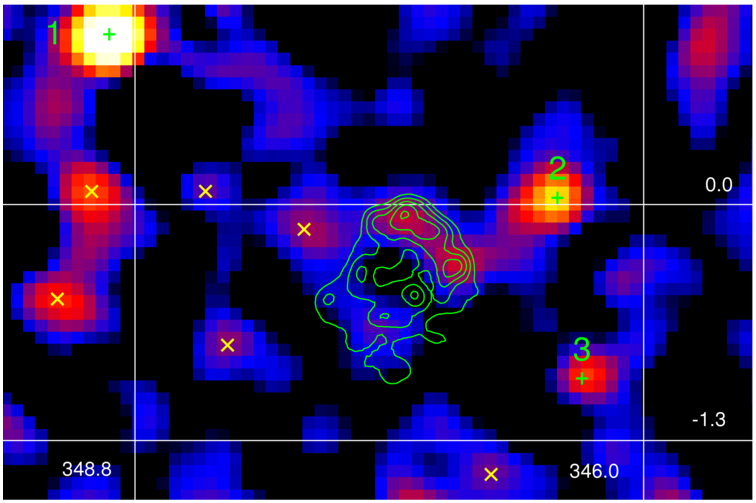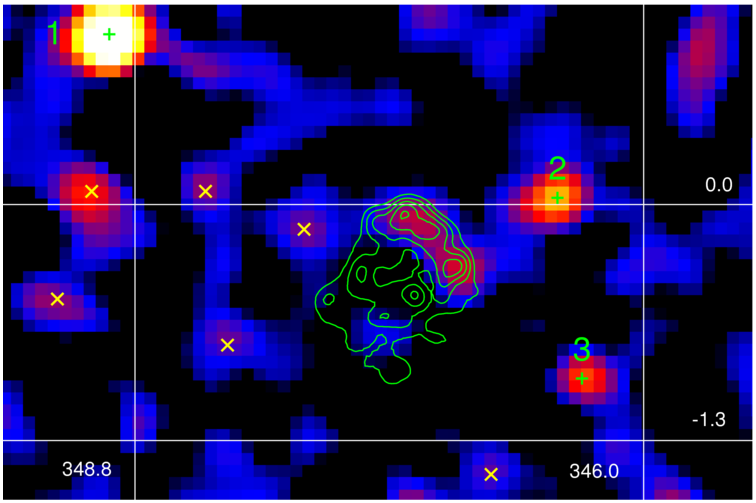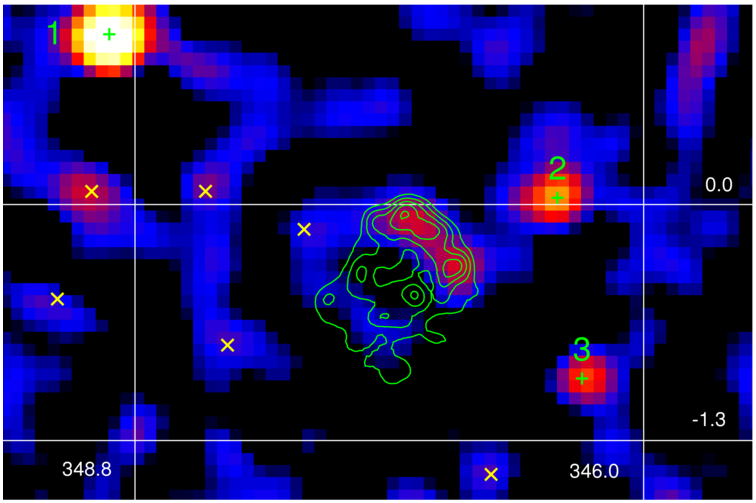Generaly, extended sources in the INTEGRAL survey are significantly smaller than systematic noise. That is why extended sources should not be significantly affected by Wavelet cleaning. To demonstrate that, we show in figure below sky images of the supernova remnant RX J1713.7-3946, which hard X-ray emission was firstly detected in [4]. The source demonstrates extended structure spatially coincided with expanding shell of supernova remnant, firstly detected in soft X-rays with ROSAT [5], in TeV energies with CANGAROO [6] and later with HESS [7,8,9].



